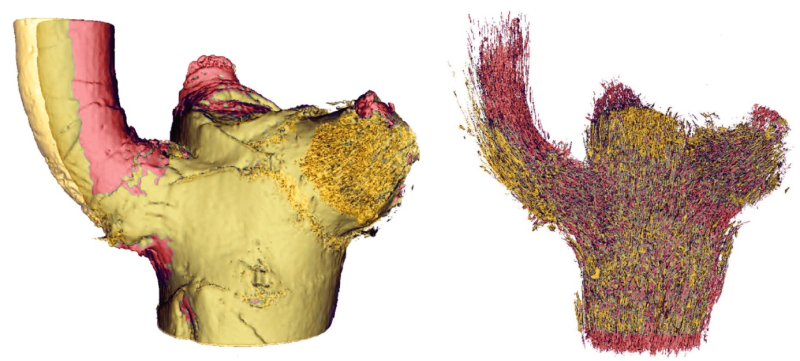Deriving inspiration from the dragon tree

Could dragon trees serve as a source of inspiration for innovations in lightweight construction? A team of researchers at the University of Freiburg and the Karlsruhe Institute of Technology (KIT) has laid the groundwork for designing technical fiber-reinforced lightweight ramifications modeled on branch-stem attachments. With the help of high-resolution magnetic resonance imaging techniques, the scientists succeeded in observing how the tissue of a living dragon tree is displaced when subjected to a load. In the future, technical fiber-reinforced lightweight ramifications with structures and behavior similar to that of the natural model could be used to improve architectural supporting structures, bicycle frames, or automobile bodies. The team published the findings in the journal Scientific Reports.
Research groups led by Prof. Thomas Speck, head of the Plant Biomechanics Group and director of the University of Freiburg Botanical Garden, and Prof. Jan G. Korvink, head of the Institute of Microstructure Technology at KIT, developed a new type of experimental setup for the study. The biologist Linnea Hesse from the University of Freiburg and the medical physicist Dr. Jochen Leipold from the Department of Radiology - Medical Physics at the Freiburg University Medical Center began by imaging the inside of a dragon tree stem and branch in an unloaded state with the help of a magnetic resonance imaging device (MRT). They then used a mechanical arm controlled from outside of the MRI device to bend the branch and again imaged the internal structure of the plant.
The scientists created three-dimensional computer models of the two sets of images. These models allowed them to compare how the tissues that stabilize the plant behave under these conditions and how they are displaced in response to a load - including both the vascular bundles that transport substances and fluids within the plant and the fiber caps that surround and protect these vascular bundles. In doing so, the scientists observed the entire branch-stem attachment as well as the individual vascular bundles to track with great precision the changes they undergo when subjected to a load. Depending on their position in the branch, the bundles and the caps stretch lengthwise to absorb a tensile load or are pressed crosswise against the surrounding tissue to cushion it against compressive stress.
The findings can now serve as a basis for developing technical fiber-reinforced lightweight ramifications - with the goal of further improving lightweight and stable materials using a natural model.
More information: Linnea Hesse et al. Magnetic resonance imaging reveals functional anatomy and biomechanics of a living dragon tree, Scientific Reports (2016). DOI: 10.1038/srep32685
Journal information: Scientific Reports
Provided by Karlsruhe Institute of Technology




















